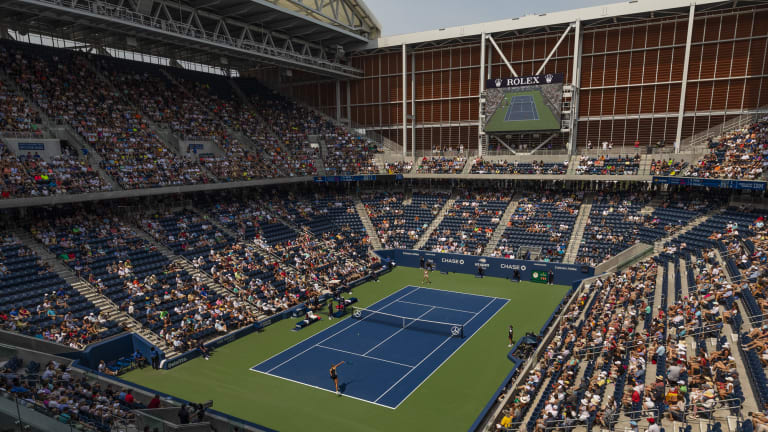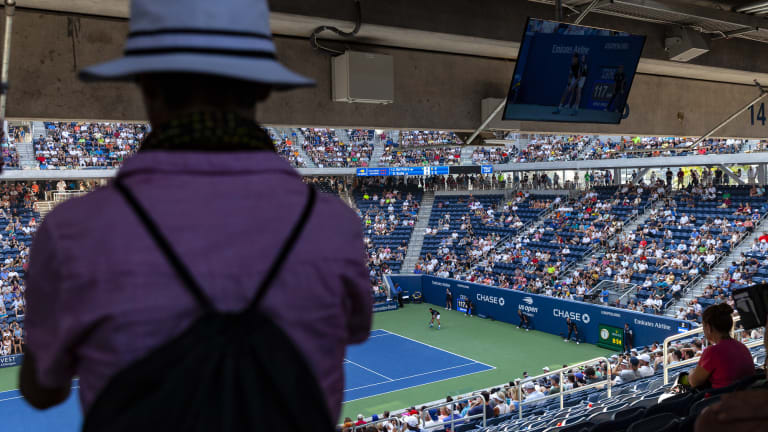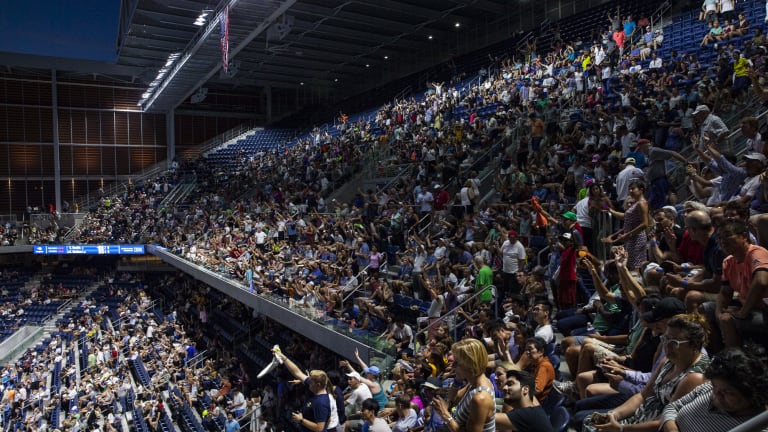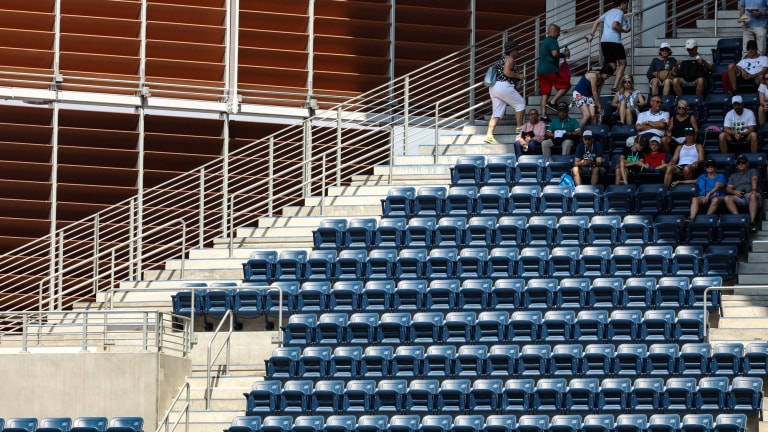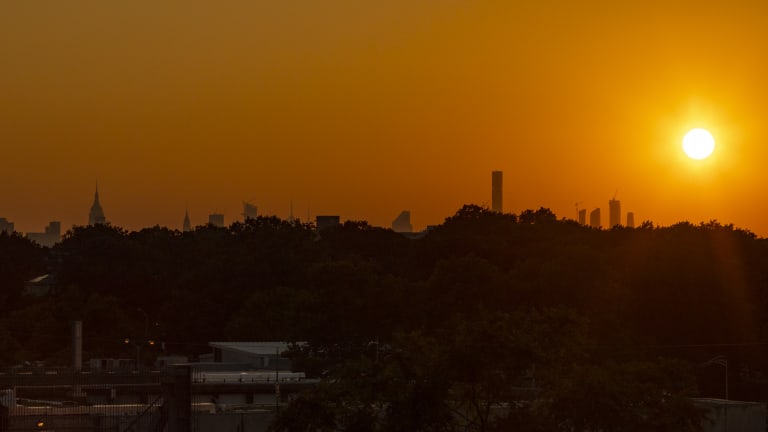NEW YORK—Venus Williams had just spent two hours running around in 100-degree heat, but she was positively giddy. Talking to ESPN’s Pam Shriver, the 38-year-old sounded as if she were a bubbly teenage rookie on tour again as she thanked the overflow crowd in the upper deck for helping pull her through her second-round match.
Two hours later, Juan Martin del Potro couldn’t stop grinning as he belted souvenir tennis balls into that same upper deck. That’s where his ever-fervent supporters—a small, undulating sea of blue-and-white in their Argentine football jerseys—had serenaded him to a straight-set win over Denis Kudla of Maryland. As more than one American has found out over the years, there’s no home-court advantage when you’re facing Delpo at the Open.
Twenty-four hours later, another crowd favorite from overseas, Gael Monfils, was holding court in the new stadium, though he was off to a slow start against Kei Nishikori. After watching him drop the first set 6-2, a fan in the rafters had had enough: “C’mawn, Mon-feels!” she yelled in an accent that can only be described as not-very-French.
In those three moments, it seemed to me that the new Louis Armstrong Stadium had officially been christened. Yes, the very first match in the arena had yielded a major upset, when Kaia Kanepi knocked off top seed Simona Halep on Monday. But it had taken a little longer for the spirit of the old stadium—call it upscale chaos, or Honey Deuce hysteria—to begin to echo through the new one.
Louis Armstrong Stadium hosted this year's Media Day at the US Open:
